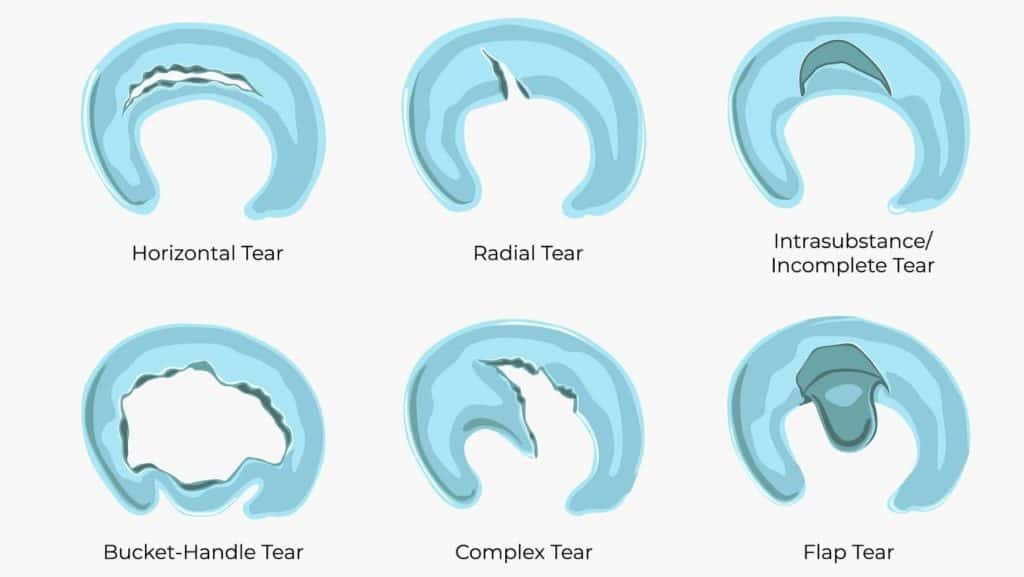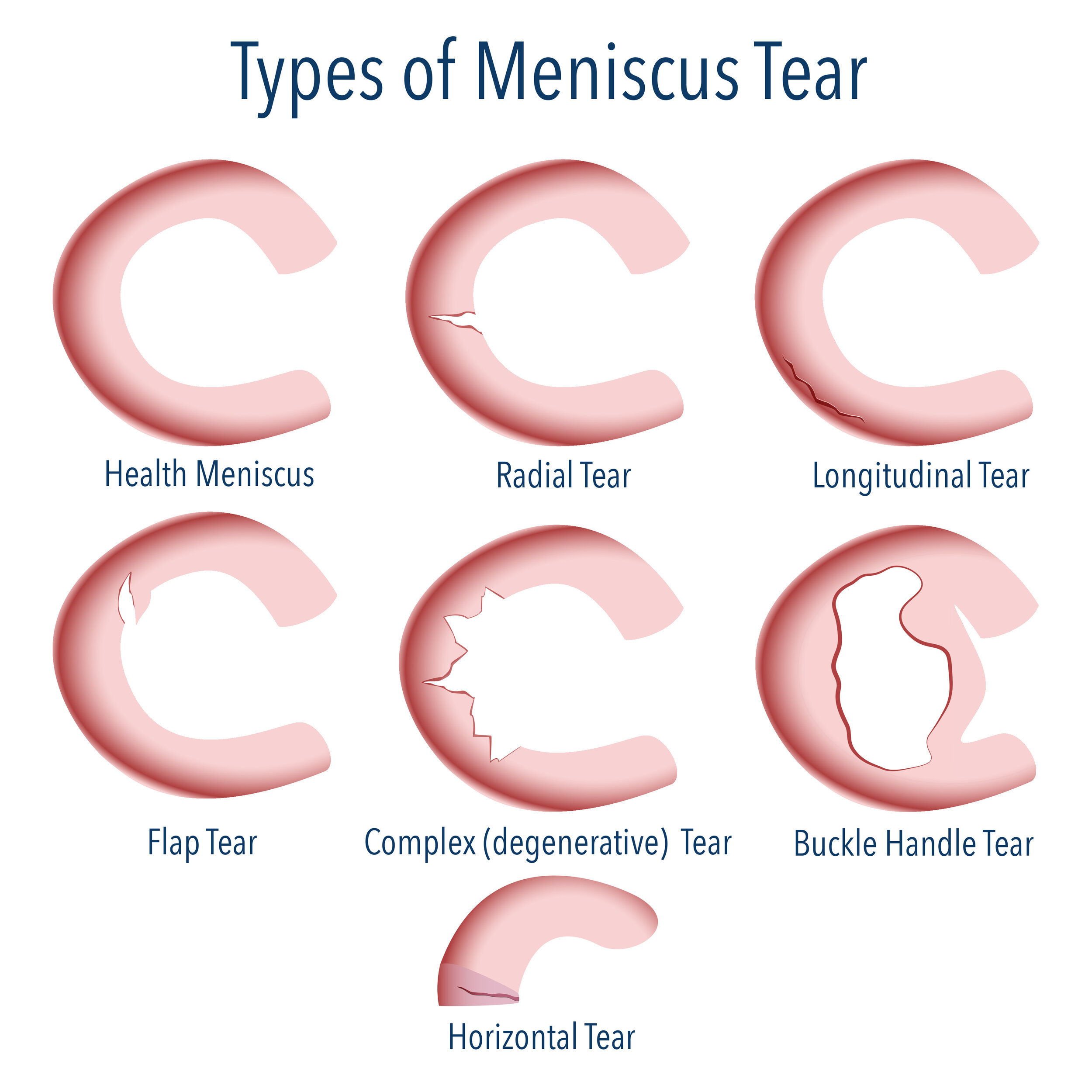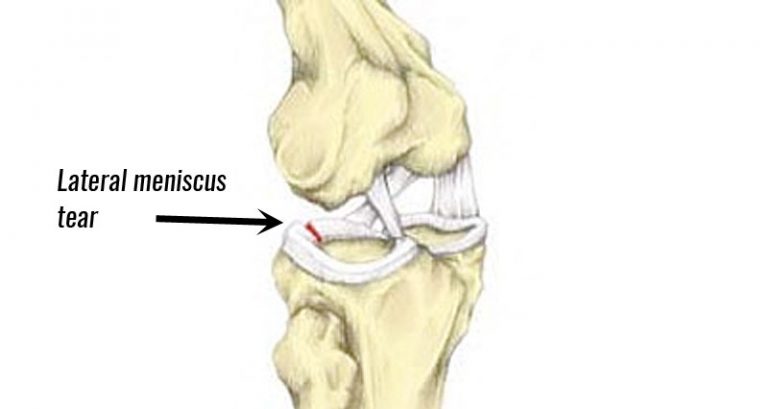Meniscus Tear Anatomy and Types

The meniscus is a C-shaped piece of cartilage that acts as a shock absorber and helps to stabilize the knee joint. It sits between the femur (thigh bone) and the tibia (shin bone). There are two menisci in each knee: a medial meniscus on the inside of the knee and a lateral meniscus on the outside.
Meniscus tears are common injuries, particularly in athletes. They can occur due to a sudden twisting or pivoting motion, a direct blow to the knee, or a fall. The severity of a meniscus tear can range from a small, partial tear to a complete tear.
Types of Meniscus Tears
There are various types of meniscus tears, each with its own characteristics and location.
- Horizontal Tear: This type of tear occurs along the width of the meniscus, often resulting from a sudden twisting motion.
- Radial Tear: This tear extends from the outer edge of the meniscus towards the center, resembling a spoke on a wheel. These tears are often caused by a direct blow to the knee.
- Oblique Tear: This tear runs diagonally across the meniscus, typically occurring due to a twisting motion or a sudden impact.
- Transverse Tear: This type of tear runs across the width of the meniscus, often caused by a sudden twisting motion.
- Complex Tear: This tear involves a combination of different tear patterns, making it more challenging to treat.
Location of Meniscus Tears
Meniscus tears can occur in different locations within the meniscus, which can influence the symptoms and treatment options.
- Peripheral Tear: This tear occurs at the outer edge of the meniscus, where the blood supply is better, and healing is more likely.
- Central Tear: This tear occurs in the inner part of the meniscus, where there is less blood supply, making healing more difficult.
Images Illustrating Meniscus Tears
- Horizontal Tear: Imagine a slice of bread with a straight cut across the width. This is similar to a horizontal tear in the meniscus.
- Radial Tear: Picture a wheel with spokes extending from the center. A radial tear resembles this pattern, with the tear extending from the outer edge towards the center of the meniscus.
- Oblique Tear: Visualize a diagonal cut across a piece of cheese. An oblique tear in the meniscus follows a similar pattern, running diagonally across the meniscus.
- Transverse Tear: Think of a straight cut across a piece of paper. A transverse tear in the meniscus is similar, running across the width of the meniscus.
- Complex Tear: Imagine a combination of the previously mentioned tear patterns, with multiple cuts and tears within the meniscus.
Causes and Symptoms of Meniscus Tears

A meniscus tear is a common injury that occurs when the cartilage in the knee is torn. The meniscus is a C-shaped piece of cartilage that acts as a shock absorber between the femur (thighbone) and the tibia (shinbone). It helps to distribute weight evenly across the knee joint and provides stability.
Causes of Meniscus Tears
Meniscus tears can occur due to a variety of factors, including sports injuries, aging, and degenerative changes.
- Sports Injuries: Sports that involve twisting, pivoting, or sudden changes in direction, such as football, basketball, and soccer, are common causes of meniscus tears. These activities put stress on the knee joint, which can lead to a tear.
- Aging: As we age, the meniscus cartilage naturally deteriorates and becomes more susceptible to tears. This is due to wear and tear over time.
- Degenerative Changes: Osteoarthritis, a condition that causes the breakdown of cartilage in the joints, can also lead to meniscus tears.
Symptoms of Meniscus Tears
The symptoms of a meniscus tear can vary depending on the severity of the tear and its location. Some common symptoms include:
- Pain: Pain is often the most common symptom of a meniscus tear. It may be sharp and sudden or dull and aching. Pain may worsen with activity or when putting weight on the affected leg.
- Swelling: Swelling around the knee joint is another common symptom. This is caused by inflammation and fluid buildup.
- Clicking or Popping: Some people with a meniscus tear may hear a clicking or popping sound in their knee when they move it. This is caused by the torn cartilage rubbing against the bones.
- Locking: In some cases, the knee may lock or give way. This occurs when the torn cartilage gets caught between the bones.
- Stiffness: Stiffness in the knee joint is another possible symptom of a meniscus tear.
Differences in Symptoms Based on Tear Type and Location
The symptoms of a meniscus tear can vary depending on the type and location of the tear.
- Tears in the Outer Portion: Tears in the outer portion of the meniscus are usually less severe and may not cause significant symptoms.
- Tears in the Inner Portion: Tears in the inner portion of the meniscus are more likely to cause pain, swelling, and locking. This is because the inner portion of the meniscus is less vascular and has a poorer blood supply, which makes it harder for the tear to heal.
- Horizontal Tears: Horizontal tears run across the width of the meniscus and are more likely to cause locking.
- Vertical Tears: Vertical tears run up and down the meniscus and are more likely to cause pain and swelling.
Diagnosis and Treatment Options

Diagnosing a meniscus tear involves a combination of medical history, physical examination, and imaging tests. Treatment options range from conservative approaches to surgical interventions, with the choice depending on the severity of the tear, the patient’s age, activity level, and overall health.
Diagnostic Methods
The diagnostic process begins with a thorough medical history and physical examination. The physician will ask about the mechanism of injury, the location and severity of pain, and any previous injuries. The physical exam includes assessing range of motion, stability, and tenderness in the affected knee.
- Physical Examination: The doctor will perform several tests to assess the knee’s stability, range of motion, and tenderness. These tests can help identify the location and severity of the tear.
- Imaging Tests:
- MRI (Magnetic Resonance Imaging): MRI is the gold standard for diagnosing meniscus tears. It provides detailed images of the knee joint, allowing the doctor to visualize the tear’s location, size, and severity.
- X-ray: While x-rays are not as effective as MRI in visualizing meniscus tears, they can rule out other conditions like fractures or arthritis.
- Arthroscopy: This minimally invasive surgical procedure involves inserting a small camera and surgical instruments into the knee joint. Arthroscopy is often used to confirm the diagnosis of a meniscus tear, assess the severity of the tear, and perform surgical repair or removal of the damaged tissue.
Treatment Options, Meniscus tear
Treatment for a meniscus tear aims to relieve pain, restore knee function, and prevent further damage.
- Conservative Treatment:
- Rest: Avoiding activities that cause pain and stress on the knee is crucial for healing.
- RICE (Rest, Ice, Compression, Elevation): This approach helps reduce inflammation and pain.
- Pain Medications: Over-the-counter pain relievers like ibuprofen or acetaminophen can help manage pain and inflammation.
- Physical Therapy: Physical therapy helps strengthen the muscles surrounding the knee, improve range of motion, and restore stability.
- Surgical Treatment:
- Meniscectomy: This procedure involves surgically removing the damaged portion of the meniscus. It is often recommended for older patients or for tears that are not repairable.
- Meniscus Repair: This procedure involves suturing the torn meniscus back together. It is typically performed in younger patients with tears that are considered repairable.
Comparison of Treatment Options
| Treatment Option | Effectiveness | Risks |
|---|---|---|
| Conservative Treatment | Effective for mild to moderate tears, especially in younger patients. | May not be effective for severe tears or for patients with significant pain or instability. |
| Meniscectomy | Effective in relieving pain and restoring function, but may increase the risk of osteoarthritis in the long term. | Risks include infection, bleeding, and damage to surrounding structures. |
| Meniscus Repair | Effective in restoring knee function and preserving the meniscus, but may not be successful for all tears. | Risks include infection, bleeding, and failure of the repair. |
A meniscus tear can be a debilitating injury for athletes, especially those who rely on agility and quick movements. JJ McCarthy, the talented quarterback for the University of Michigan, faced his own challenges with a knee injury in 2021.
You can see his impressive stats and how he overcame these challenges by checking out jj mccarthy stats. His recovery and return to the field demonstrate the resilience and determination often needed to overcome a meniscus tear.
A meniscus tear is a common knee injury, often occurring during sports or everyday activities. The meniscus, a C-shaped piece of cartilage, acts as a shock absorber and helps stabilize the knee joint. If you’ve suffered a meniscus tear, understanding the healing process is crucial.
Check out this comprehensive guide on meniscus tear recovery to learn about treatment options, rehabilitation strategies, and how to manage your pain. Knowing the intricacies of meniscus tear recovery can help you regain your mobility and get back to doing the things you love.
